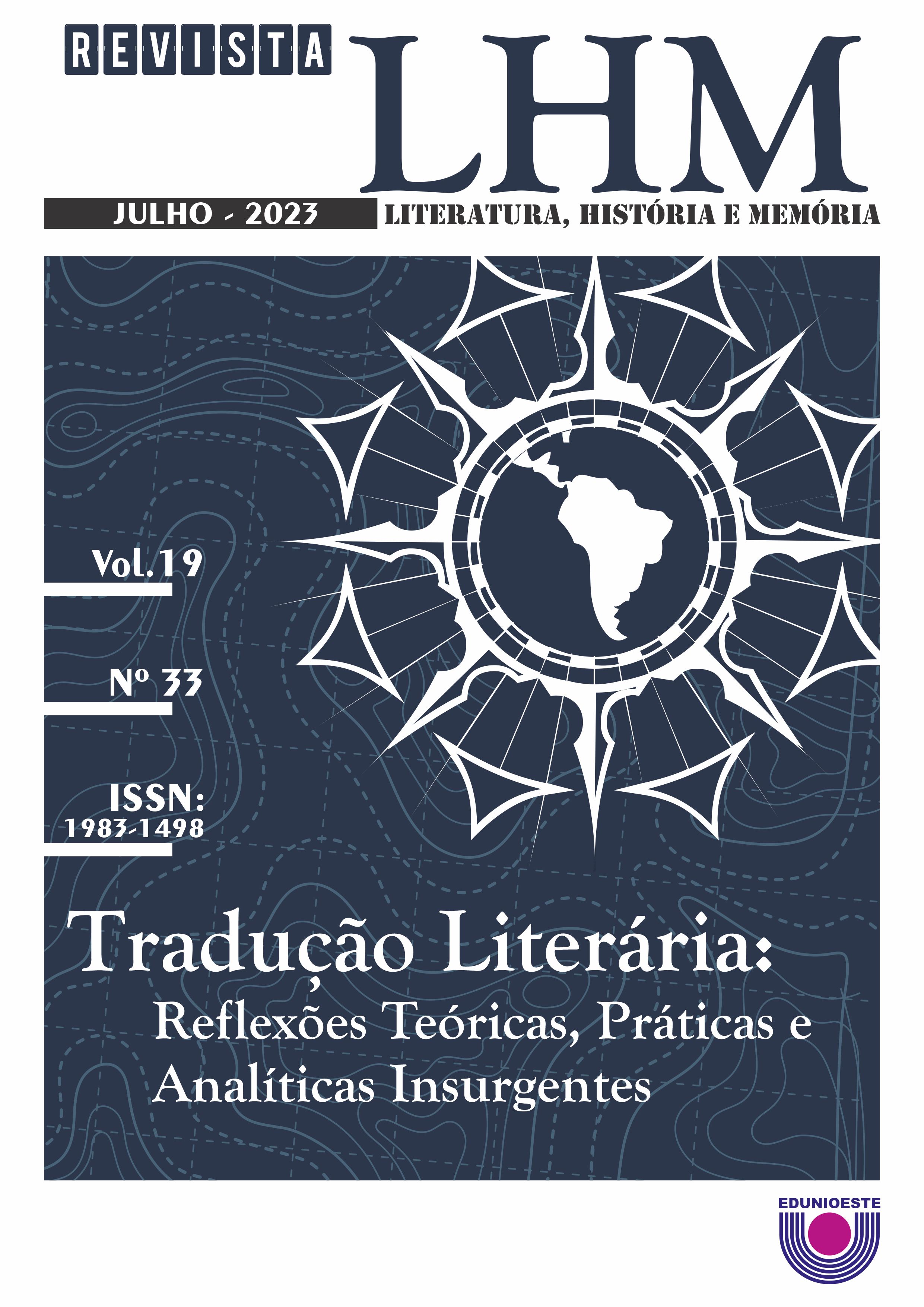Povo na língua: território e cosmologia em uma poética do traduzir Ayvu Rapyta
DOI:
https://doi.org/10.48075/rlhm.v19i33.30876Resumo
Se o tradutor fugir de tentativas de interpretações ou desconsiderar a primeira vista um leitor, então, ele pode se apoiar nas palavras. Quando dos textos míticos, o que se verifica é uma incoerência na sua linguagem. Essa incoerência é domesticada por uma razão na política da traduzir. A poética do traduzir é aquela pelas palavras, em seu espraiamento (MARTINS, 2022). Nesse sentido a incoerência dos textos míticos é uma poética. Considera-se o se fazendo. Chamaremos aos textos míticos, de narrativas cosmológicas. Tratar de questões de cosmologia na tradução é interessante para aqueles que se embrenham nos estudos de línguas indígenas e em suas traduções para línguas de colonização. O aspecto dessa língua contida no material traduzido é uma língua de novidade, algo como “língua pura” (BENJAMIN, [1923] 2008). Essa “língua pura” é uma língua de poética da relação. Temos o pensamento de Édouard Glissant ([1990] 2011) como base, do qual continuamos com o conceito de Diverso, considerando a poética do traduzir em Henri Meschonnic ([1989] 2006). Nesse sentido, o Diverso para a contínuo, a repetição e diferença na língua, de aspectos que significam antes de tudo. O aspecto do Diverso nessa língua da poética da relação implica um modo de ver. O cosmológico na tradução, assim, pelo participativo, o território, o sujeito do poema, o povo na língua. Nossa teorização está na tradução de Ayvu Rapyta (CADOGAN, 1959), em língua indígena Mbya-Guarani.
Downloads
Publicado
Como Citar
Edição
Seção
Licença

Este trabalho está licenciado sob uma licença Creative Commons Attribution-NonCommercial-ShareAlike 4.0 International License.
Aviso de Direito Autoral Creative Commons
Política para Periódicos de Acesso Livre
Autores que publicam nesta revista concordam com os seguintes termos:
1. Autores mantém os direitos autorais e concedem à revista o direito de primeira publicação, com o trabalho simultaneamente licenciado sob a Licença Creative Commons Attribution que permite o compartilhamento do trabalho com reconhecimento da autoria e publicação inicial nesta revista.2. Autores têm autorização para assumir contratos adicionais separadamente, para distribuição não-exclusiva da versão do trabalho publicada nesta revista (ex.: publicar em repositório institucional ou como capítulo de livro), com reconhecimento de autoria e publicação inicial nesta revista.
3. Autores têm permissão e são estimulados a publicar e distribuir seu trabalho online (ex.: em repositórios institucionais ou na sua página pessoal) a qualquer ponto antes ou durante o processo editorial, já que isso pode gerar alterações produtivas, bem como aumentar o impacto e a citação do trabalho publicado (Veja O Efeito do Acesso Livre).
Licença Creative Commons
Esta obra está licenciada com uma Licença Creative Commons Atribuição-NãoComercial-CompartilhaIgual 4.0 Internacional, o que permite compartilhar, copiar, distribuir, exibir, reproduzir, a totalidade ou partes desde que não tenha objetivo comercial e sejam citados os autores e a fonte.


